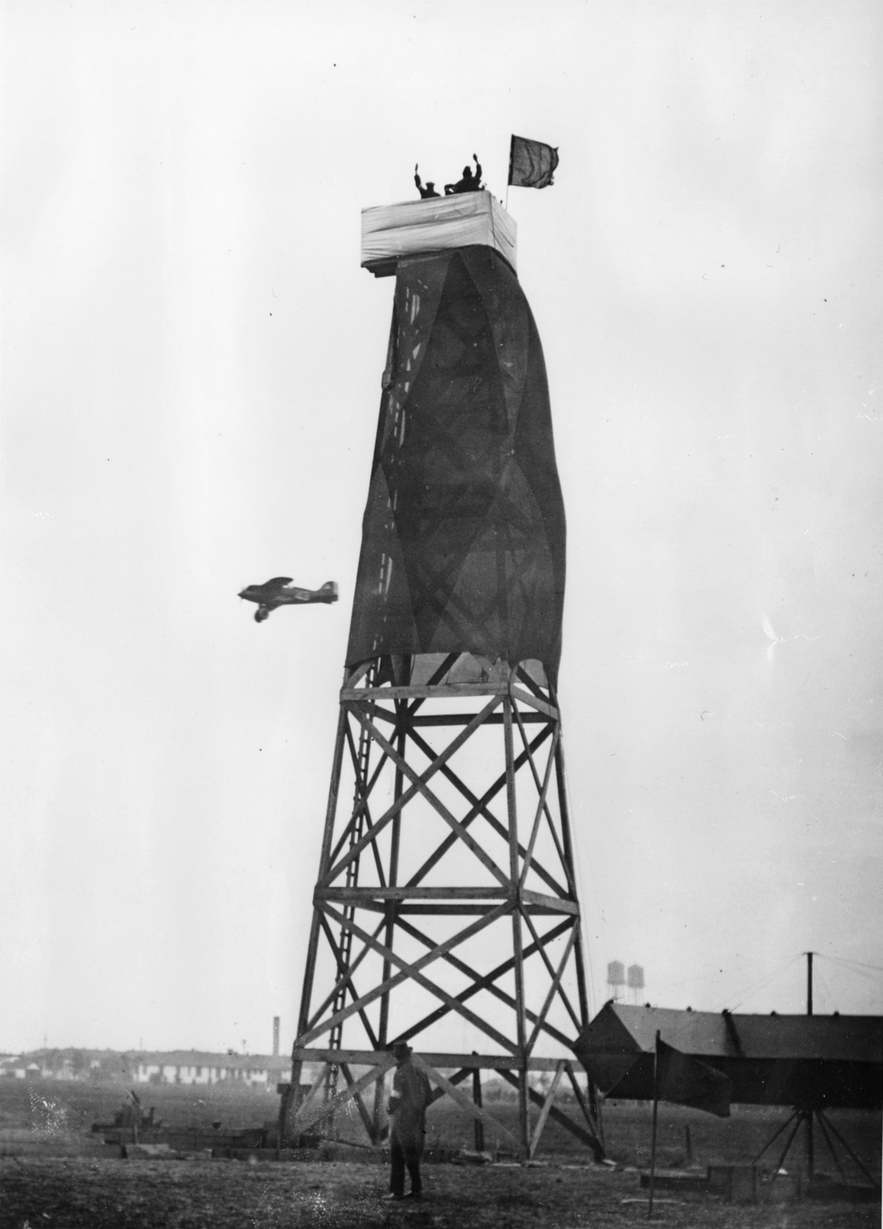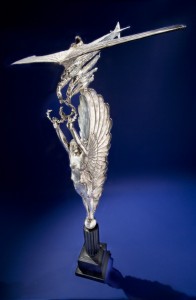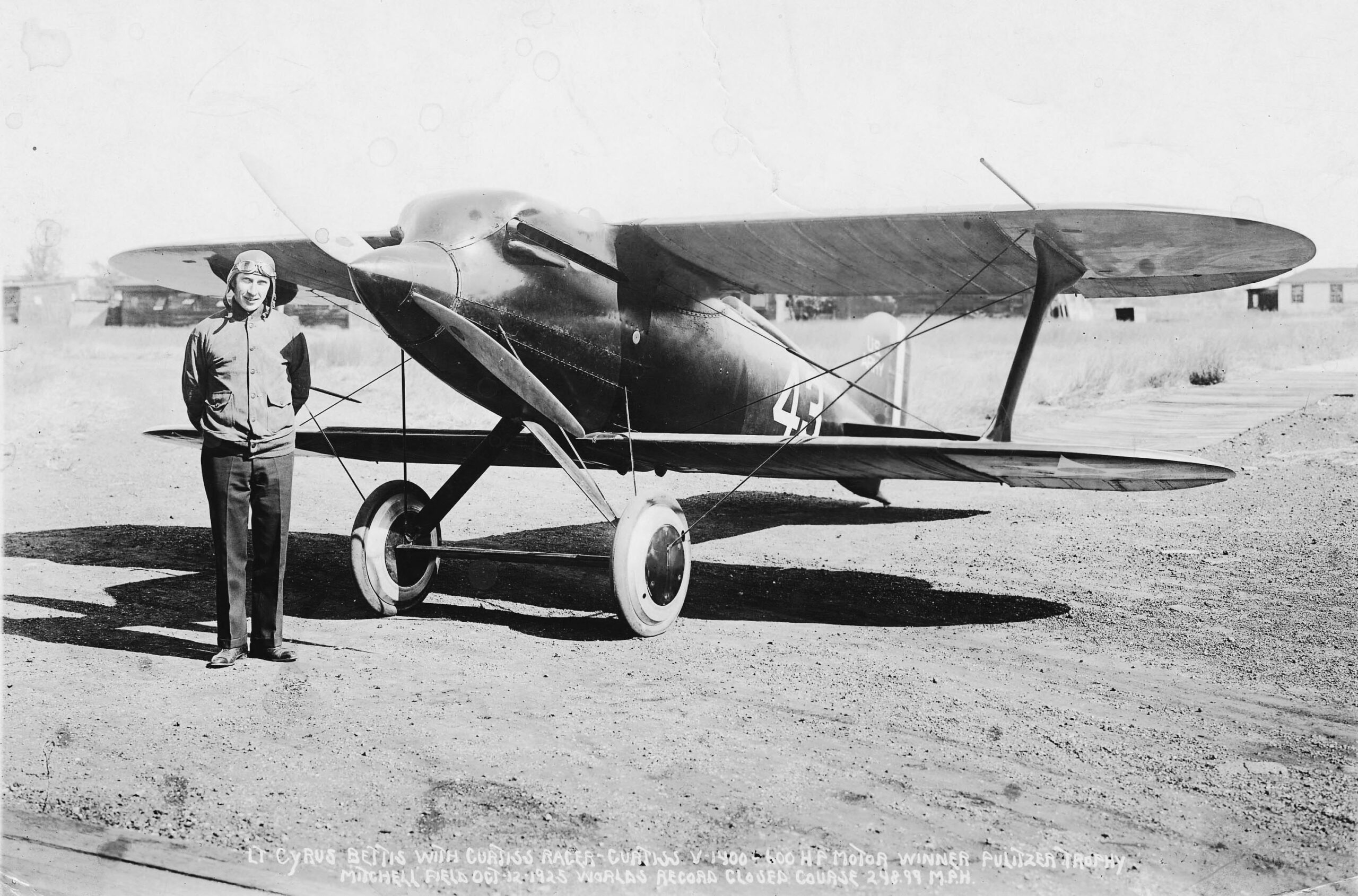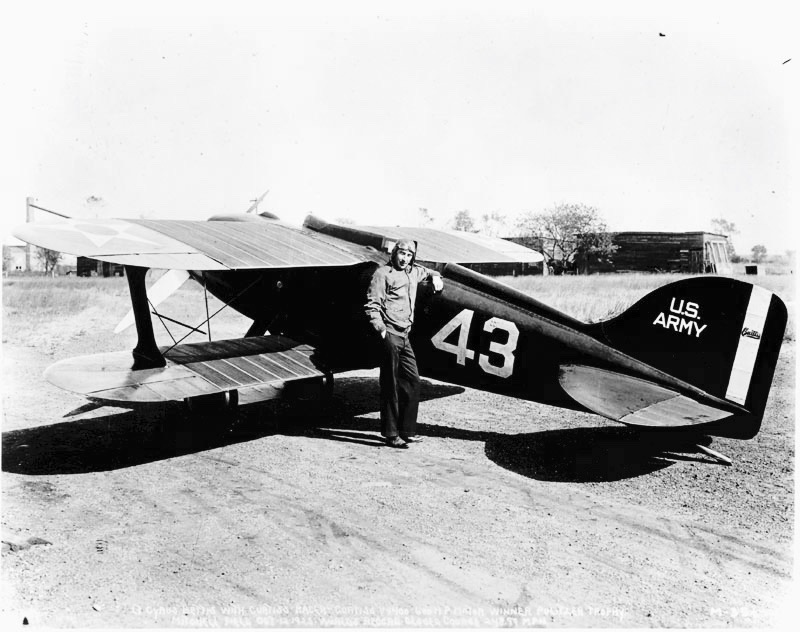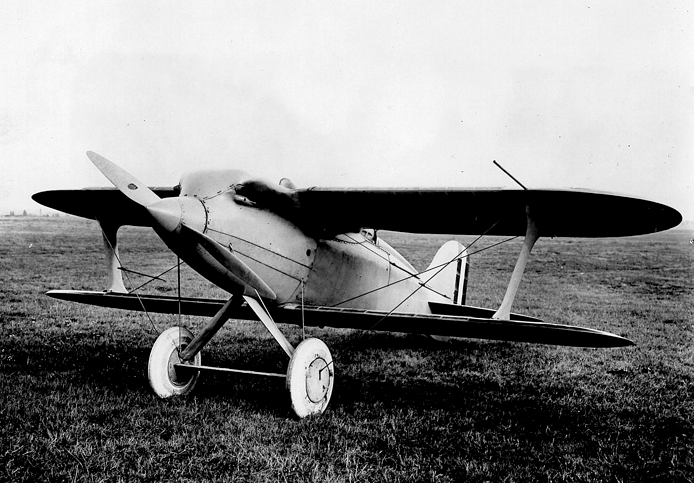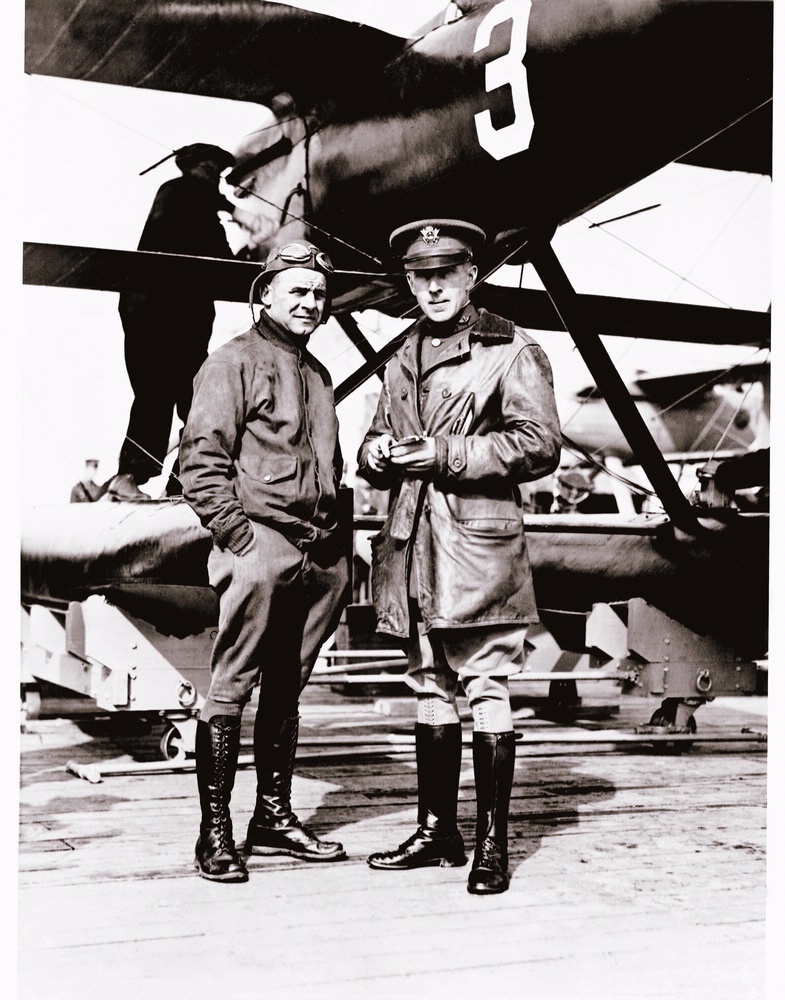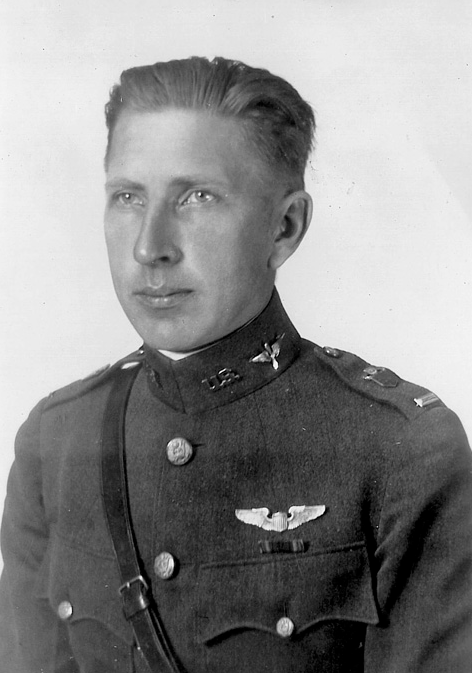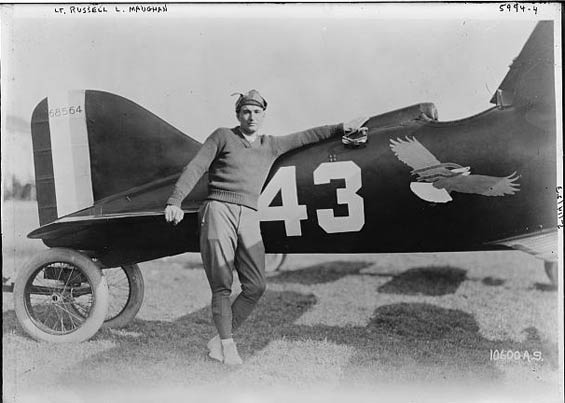
14 October 1922: Air races were an extremely popular event in the early days of aviation. An estimated 200,000 spectators watched the opening race at the National Air Races, held at Selfridge Field (now, Selfridge Air National Guard Base) near Mount Clemens, Michigan from 8 to 14 October.
The Pulitzer Trophy Race was Event No. 5 on the afternoon of Saturday, 14 October. It was a “Free-for-All Race for High-Speed Airplanes.” The course consisted of five laps around an approximate 50 kilometer course, starting at Selfridge Field, then south to Gaulkler Point on Lake St. Clair. From there, the course was eastward for ten miles, keeping to the right of a moored observation balloon. The airplanes would then circle an anchored steamship, Dubuque, and return to Selfridge Field.
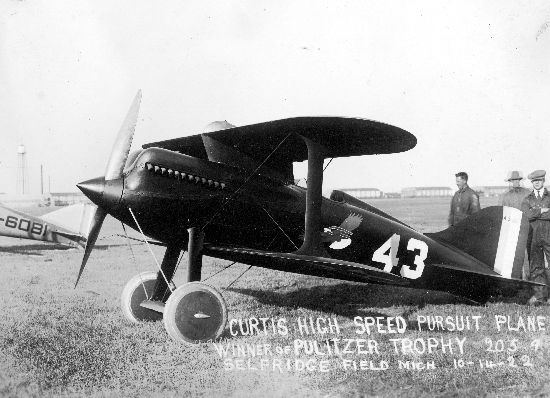
Lieutenant Russell Lowell Maughan, Air Service, United States Army, flying a Curtiss R-6, Air Service serial number A.S. 68564, finished the race in first place with an average speed of 205.386 miles per hour (330.172 kilometers per hour). He also set two Fédération Aéronautique Internationale (FAI) World Records for Speed during the race: 330.41 kilometers per hour (205.31 miles per hour) over a distance of 100 kilometers,¹ and 331.46 kilometers per hour (205.96 miles per hour) over a distance of 200 kilometers).²
In addition to the Pulitzer Trophy, the first place finisher was awarded a $1,200.00 prize. Second place was taken by another U.S. Army pilot, Lieutenant Lester James Maitland, who was also flying a Curtiss R-6, serial number A.S. 68563.
Russell Maughan had been a fighter pilot during World War I. He shot down four enemy airplanes with his Spad S.XIII C.I, and was awarded the Distinguished Service Cross for bravery in action. He flew in several air races and set records. He went on to fly the Dawn-to-Dusk transcontinental flight in a Curtiss PW-8, 23 June 1924. In World War II he commanded the 51st Troop Carrier Wing during Operation Torch, the invasion of North Africa.
Lester Maitland along with Lieutenant Albert F. Hegenberger, made the first trans-Pacific flight from California to Hawaii in 1927. He was the oldest USAAF pilot to fly combat missions in World War II, flying a Martin B-26 Marauder, the Texas Tarantula, as the commanding officer of the 386th Bombardment Group. He was awarded a Silver Star and retired with the rank of brigadier general.
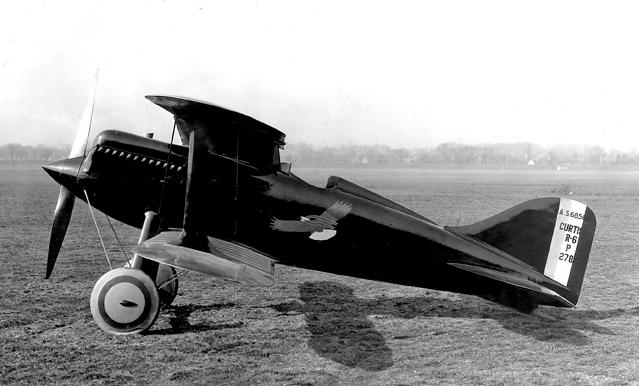

The two R-6 Racers were built of the U.S. Army at a cost of $71,000, plus $5,000 for spare parts.
The Curtiss R-6 was 19 feet, 0 inches (5.791 meters) long with a wing span of 19 feet, 0 inches (5.791 meters). It had an empty weight of 2,121 pounds (962 kilograms).
The R-6 was powered by a water-cooled, normally-aspirated 1,145.111-cubic-inch-displacement (18.765 liter) Curtiss D-12 dual overhead cam (DOHC) 60° V-12 engine, which was developed by Arthur Nutt, based on the earlier Curtiss K-12 which had been designed by Charles B. Kirkham. The D-12 had four valves per cylinder and a compression ratio of 5.7:1, and was rated at 415 horsepower at 2,000 r.p.m., and 460 horsepower at 2,300 r.p.m. During testing, it produced a 475 horsepower at 2,320 r.p.m. using a 50/50 mixture of 95-octane gasoline and benzol. The D-12 was a direct-drive engine and it turned a two-bladed, fixed-pitch, forged aluminum propeller designed by Dr. Sylvanus A. Reed. The Curtiss D-12 was 56¾ inches (1.441 meters) long, 28¼ inches (0.718 meters) wide and 34¾ inches (0.882 meters) high. It weighed 680 pounds (308 kilograms).
The R-6 racer had a maximum speed of 240 miles per hour (386 kilometers per hour). The service ceiling was 22,000 feet (6,706 meters), and it had a maximum range of 281 miles (452 kilometers).
A.S. 68564 disintegrated in flight at the Pulitzer Trophy Race, 4 October 1924, killing its pilot, Captain Burt E. Skeel.
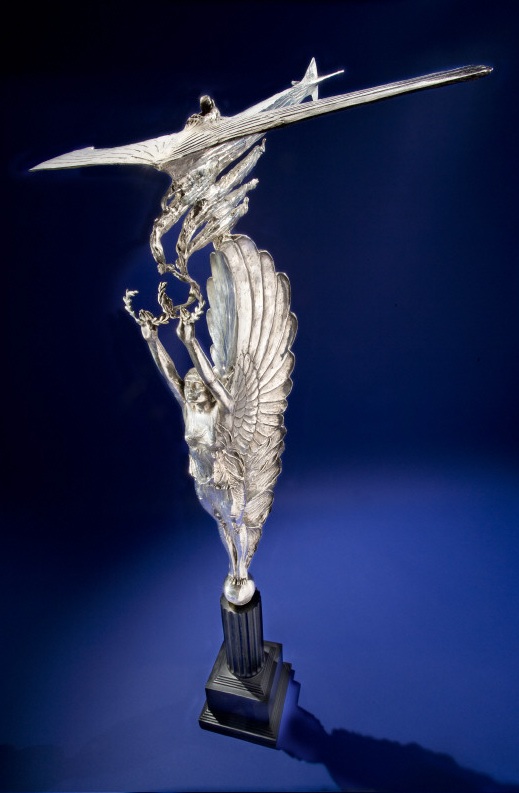
¹ FAI Record File Number 15195
² FAI Record File Number 15196
© 2017, Bryan R. Swopes
